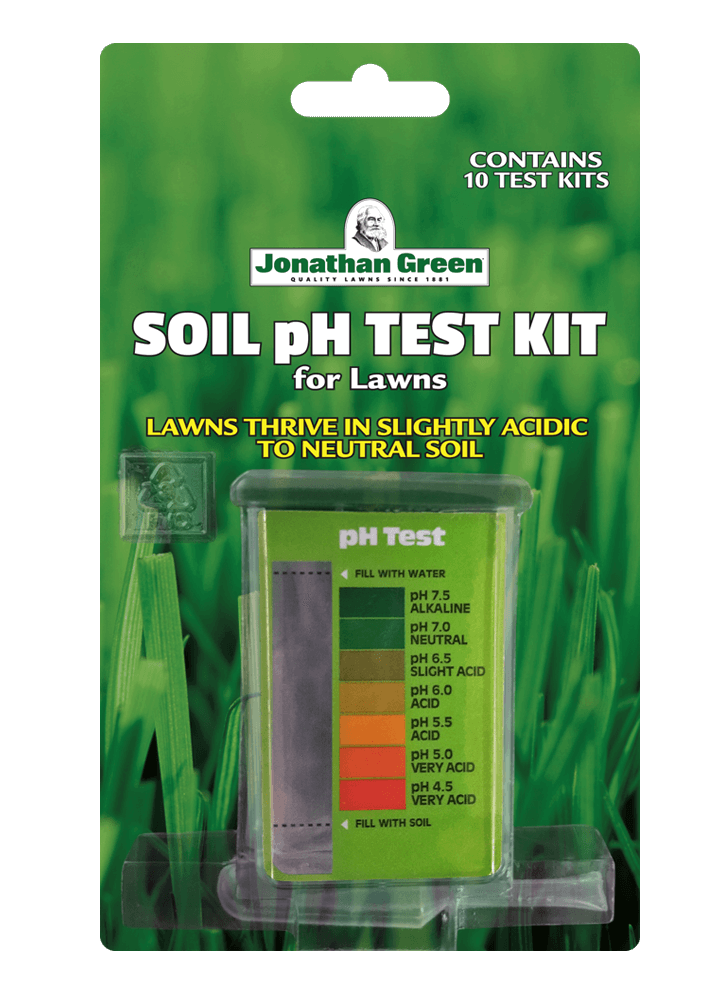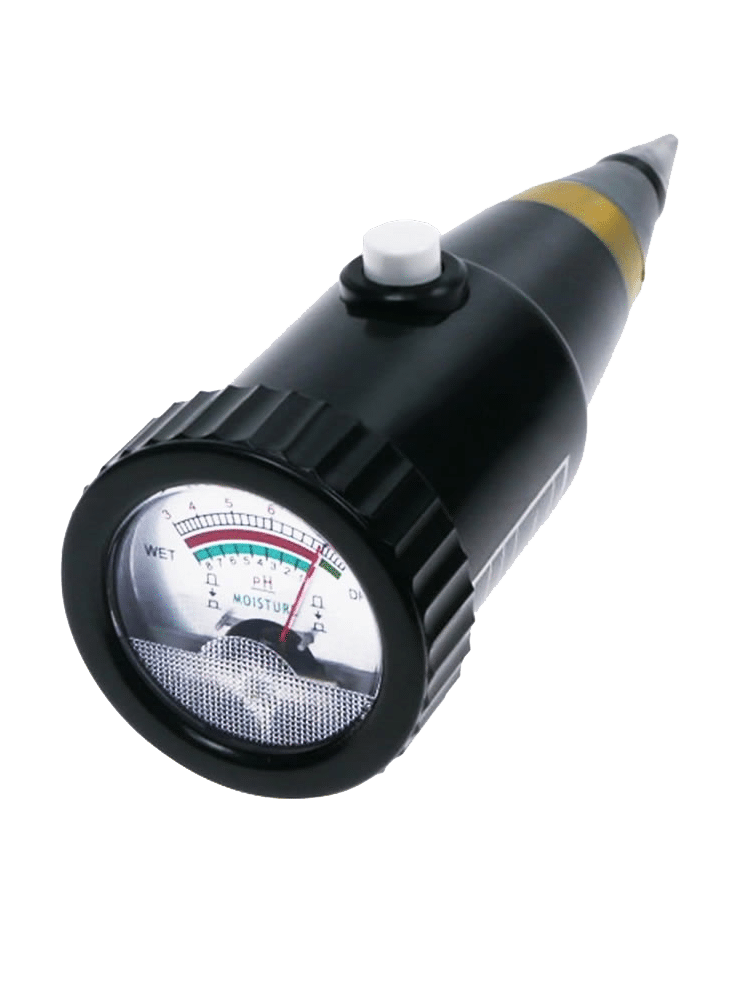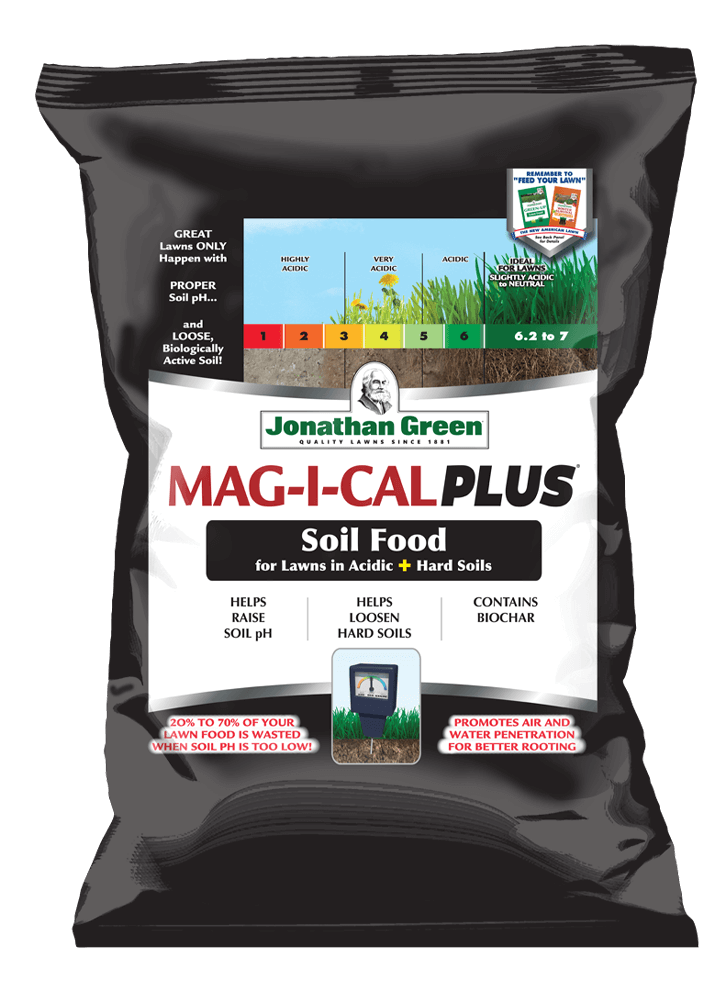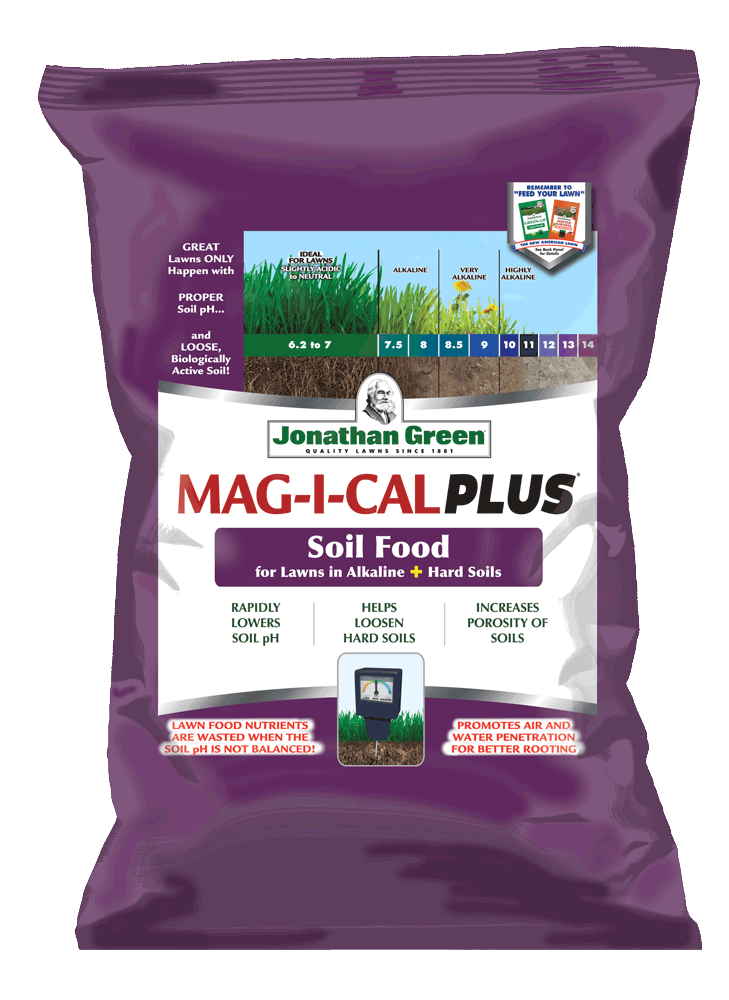Healthy Soil pH
If you are looking for information about raising or lowering the pH level of your soil to achieve a healthy lawn, look no further than the experts at Jonathan Green.
Lush green lawns are our business at Jonathan Green. We are innovators and leaders in creating the finest quality grass seed and have been improving our genetically superior grass seed since 1881.
Importance of Soil pH
The “p” in pH stands for “potential. The “H” stands for hydrogen. It’s a mathematic symbol that represents the logarithmic scale of the hydrogen ion.
On a scale of 1 to 14, a pH of 1 is very acidic and a pH of 14 is very alkaline (or basic), while a pH reading of 7 is neutral. Lawns grow best in soil that is slightly acidic to neutral (between 6.2 and a 7.0 on the pH scale).
Soil pH is a very important factor in lawn health – if the soil is too acidic or too alkaline, your grass will be unable to absorb nutrients properly. Highly acidic soil can also damage grass plant roots.
How to Test Soil pH
There are several ways you can go about testing the pH of your soil. The best way to get an accurate reading is to send a soil sample to your county cooperative extension where your soil will be tested in a lab. This will result in a more thorough analysis of your soil. You can also purchase soil test kits online.
Use the Jonathan Green Soil pH Test Kit for Lawns to determine the pH of your soil in just five minutes. The kit includes one test tube, one capsule of powder, and one pH range card to evaluate the results. It is important to use either distilled water or rainwater when performing this test in order to get accurate pH readings. Tap water is pH adjusted by the water company.
For professional quality testing, try Jonathan Green’s Pro pH & Moisture Soil Tester which quickly and accurately measures soil pH and moisture levels to within 0.2 pH and a 10% moisture level. This high-quality tool is used by sod growers, golf course superintendents, sports field managers, and landscapers to determine the right time to add fertilizer and lime. The soil pH will be fully calculated in 2 minutes.
How to Change Soil pH
Is the soil too acidic? Many people believe the best way to adjust it is to add granular, pulverized or pelletized limestone. However, it takes 50 pounds of limestone per 1,000 sq ft of lawn area to significantly increase soil pH, so this means 250 pounds to increase soil pH on a 5,000 sq ft lawn and 500 pounds on a 10,000 sq ft lawn.
A better alternative is one bag of Jonathan Green Mag-I-Cal® Plus for Lawns in Acidic & Hard Soil. One bag covers either 5,000 sq ft or 15,000 sq ft. This soil conditioner contains calcium, sulfur, and iron to naturally adjust the pH of the soil, while also loosening hard soil to increase absorption of nutrients and water.
If your soil is too alkaline (pH above 7.2), you will need to lower the pH. Jonathan Green’s Mag-I-Cal® Plus for Lawns in Alkaline & Hard Soil lowers the pH and loosens hard soils. The active ingredients are sulfur and calcium sulfate dihydrate which balances soil pH, is important for cell development, and is vital to many grass plant functions.
Mentioned Products
Many grass problems can be attributed to soil that is not healthy. For more tips on resolving soil pH, visit Jonathan Green online or visit your nearest independent retailer for reliable lawn and garden advice that will help you achieve great results with your lawn.



